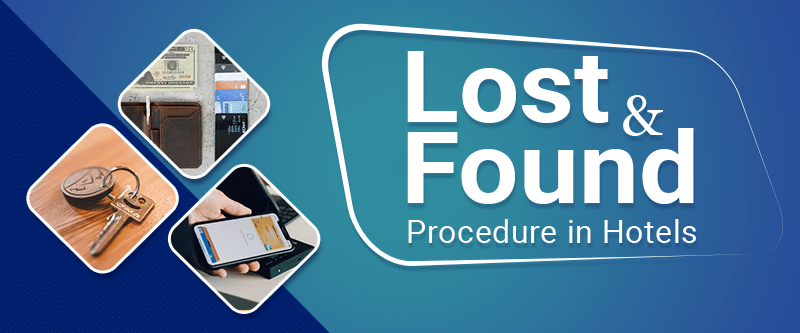Buying home insurance is one of the most critical decisions homeowners make to protect their property and assets. However, in the pursuit of cost savings, many fall into traps that can lead to inadequate coverage or financial risks. Below is an expanded guide highlighting even more common mistakes and how to avoid them, ensuring you get a policy that balances affordability and comprehensive protection.
Key Takeaways
- Assess your coverage needs to avoid underinsurance.
- Don’t focus solely on premiums; consider deductibles, exclusions, and liability limits.
- Compare multiple quotes and research insurers before making a decision.
- Update your policy regularly to reflect changes in your home or lifestyle.
- Cheap home insurance can be effective if chosen carefully—never compromise on essential protections.
Expanded Common Mistakes When Buying Cheap Home Insurance

1. Skipping a Home Insurance Needs Assessment
One of the biggest errors is purchasing a policy without fully understanding what you need. Homeowners may underestimate the costs of replacing their home or belongings, leading to insufficient coverage.
Solution:
Calculate the replacement cost of your home and evaluate the value of your personal belongings to get an accurate coverage amount.
2. Opting for Minimal Dwelling Coverage
Some cheap policies only provide coverage for a portion of your home’s value, leaving you underinsured if a disaster occurs.
Solution:
Ensure the dwelling coverage matches the full replacement cost of your home, including labor and materials.
3. Overlooking Inflation Protection
Many homeowners don’t account for rising construction costs or inflation, which can leave their coverage outdated over time.
Solution:
Choose a policy with an inflation guard or review your coverage annually to account for rising costs.
4. Neglecting Personal Property Coverage
Cheap policies often offer limited coverage for personal belongings, leaving homeowners unable to replace items in case of loss or theft.
Solution:
Take an inventory of your belongings and opt for personal property coverage that reflects their replacement value.
5. Ignoring Natural Disaster Coverage
Many standard home insurance policies exclude coverage for natural disasters such as floods, earthquakes, or hurricanes. Homeowners often overlook this, thinking these events are unlikely.
Solution:
Evaluate your risk for natural disasters and consider adding riders for flood insurance, earthquake insurance, or hurricane coverage.
6. Not Asking About Endorsements
Cheap policies may not offer endorsements for high-value items like jewelry, art, or collectibles. This could lead to significant losses if these items are damaged or stolen.
Solution:
Ask about endorsements or riders to cover valuable items beyond the policy’s standard limits.
7. Choosing the Wrong Deductible
Many homeowners opt for a high deductible to lower premiums, only to find themselves financially strained during a claim.
Solution:
Select a deductible that balances affordability with manageable out-of-pocket costs in case of a claim.
8. Not Understanding Replacement Cost vs. Actual Cash Value
Some policies only pay the depreciated value (actual cash value) of your belongings, leaving you with insufficient funds to replace them.
Solution:
Choose replacement cost coverage to ensure you receive the full amount needed to replace damaged or stolen items.
9. Failing to Secure Liability Coverage
A common mistake is skimping on liability insurance, which protects you against lawsuits for injuries or property damage caused by you or your family.
Solution:
Opt for liability coverage of at least $300,000, or higher if you have significant assets.
10. Assuming Land Value Should Be Insured
Some homeowners mistakenly include the land value in their dwelling coverage, inflating their premium unnecessarily.
Solution:
Only insure the structure of your home, not the land it sits on.
11. Forgetting About Additional Living Expenses (ALE)
If your home becomes uninhabitable, you may need funds to cover temporary housing. Cheap policies often exclude or limit ALE coverage.
Solution:
Ensure your policy includes adequate ALE coverage for hotels, meals, and other living expenses.
12. Overlooking Older Home Coverage
If your home is older, it may require special coverage for upgrades to meet modern building codes. Standard policies may not cover these costs.
Solution:
Consider ordinance or law coverage to pay for code-compliant repairs.
13. Not Considering Claims-Free Discounts
Homeowners who haven’t filed claims in several years often miss out on discounts for maintaining a clean record.
Solution:
Ask your insurer about claims-free discounts and how to qualify for them.
14. Relying Solely on Online Quotes
Online quotes may not always include all available discounts or reflect your unique circumstances, leading to inaccurate pricing.
Solution:
Consult with an insurance agent to get a personalized quote and better understand your options.
15. Underinsuring Rental Properties

If you rent out part of your home, standard home insurance may not provide adequate coverage for tenant-related risks.
Solution:
Consider landlord insurance or add a rider for rental property coverage.
16. Failing to Secure Water Backup Coverage
Many policies don’t cover water damage from sewer or drain backups, a common and costly issue.
Solution:
Add water backup coverage to your policy for additional protection.
17. Overlooking Home Business Coverage
Homeowners with home-based businesses often assume their policy covers business equipment and liabilities, which it typically doesn’t.
Solution:
Add a home business endorsement or a separate business policy.
18. Not Updating Policy After Renovations
Home improvements like remodeling, adding a pool, or building a deck can increase your home’s value, requiring updates to your coverage.
Solution:
Notify your insurer of significant renovations to ensure your policy reflects the updated value.
19. Forgetting Security System Discounts
Installing alarms, cameras, or smart locks can significantly reduce your premiums, but many forget to report these upgrades.
Solution:
Inform your insurer about any security enhancements to qualify for discounts.
20. Misjudging Geographic Risks
Living in areas prone to wildfires, floods, or other hazards can increase risks not covered by basic policies.
Solution:
Evaluate local risks and consider additional coverage or riders tailored to your area.
21. Failing to Understand the Policy Terms
Many homeowners focus on the price of the policy without fully understanding its terms and conditions. This can lead to unpleasant surprises when filing a claim.
Solution:
Carefully read the fine print, or ask your insurance agent to explain the terms in simple language.
22. Not Checking Claim Settlement Ratios
Cheaper insurance policies are sometimes offered by insurers with poor claim settlement histories.
Solution:
Research the claim settlement ratio of the insurer to ensure they have a strong track record of honoring claims.
23. Relying on Standard Market Value Instead of Replacement Value
Some policies base payouts on the current market value of your home, which may be lower than the cost to rebuild after a disaster.
Solution:
Choose a policy that offers replacement cost coverage rather than market value.
24. Ignoring Seasonal Risks
Certain locations experience seasonal risks such as winter storms or hurricanes. Cheap policies may exclude coverage for these events.
Solution:
Evaluate seasonal risks in your area and ensure your policy covers them.
25. Overlooking Coverage for Detached Structures
Cheap home insurance policies often exclude coverage for garages, sheds, fences, or other detached structures.
Solution:
Check the policy for coverage of additional structures and add riders if necessary.
26. Not Considering Loss of Use Coverage
Inexpensive policies may not include coverage for living expenses if your home becomes uninhabitable after a disaster.
Solution:
Ensure your policy includes “loss of use” coverage to cover hotel stays, meals, and other expenses.
27. Failing to Document Belongings

Cheap policies may require detailed proof of ownership for claims, and many homeowners lack proper documentation of their belongings.
Solution:
Create a home inventory with photos and receipts to simplify the claims process.
28. Not Addressing Local Building Regulations
Some cheap policies do not account for local building codes or permit requirements, leaving you responsible for additional repair costs.
Solution:
Ensure your policy includes ordinance or law coverage to cover these costs.
29. Forgetting About Coverage for Outdoor Property
Items like patio furniture, garden tools, or playsets are often overlooked, but they may not be covered under standard policies.
Solution:
Add coverage for outdoor property if it’s not included in your base policy.
30. Overinsuring for the Wrong Risks
Some homeowners purchase cheap policies that include unnecessary coverage, such as earthquake insurance in a low-risk area, while ignoring more relevant risks like floods.
Solution:
Understand the specific risks for your area and customize your policy accordingly.
31. Not Accounting for Depreciation in Actual Cash Value Policies
Cheap policies often calculate claims based on actual cash value, which factors in depreciation, leaving you with less money than needed to replace damaged items.
Solution:
Opt for replacement cost value coverage to avoid depreciation deductions.
32. Ignoring Policies with Guaranteed Replacement Costs
Some cheaper policies do not provide guaranteed replacement costs, meaning they cap payouts at a certain amount even if rebuilding costs exceed it.
Solution:
Choose policies that guarantee full replacement costs for your home.
33. Missing Opportunities for Green Building Discounts
Some insurers offer discounts for energy-efficient or environmentally friendly homes, which homeowners often overlook.
Solution:
Ask your insurer about discounts for green building certifications or energy-efficient upgrades.
34. Forgetting About Emergency Assistance Services
Cheap policies may exclude add-ons like emergency assistance, which can help with temporary repairs or housing immediately after an incident.
Solution:
Look for policies that include or offer emergency assistance coverage as an add-on.
35. Assuming Coverage Extends to Vacant Properties
If your home is vacant for an extended period, standard policies may not cover damages that occur during that time.
Solution:
If your home will be vacant for a significant time, purchase a vacant home insurance policy or add a rider to your existing coverage.
Also Read: What Are The Different Levels Of Home Insurance Coverage?
Conclusion
Finding affordable home insurance is possible without compromising quality if you avoid common pitfalls. By understanding your needs, comparing policies, and staying informed about coverage options, you can strike the perfect balance between affordability and comprehensive protection.
Frequently Asked Questions (FAQs)
Why is cheap home insurance risky?
Cheap policies may lack essential coverage or come with high deductibles, leaving you exposed to significant financial risks.
How can I find affordable home insurance without compromising quality?
Compare multiple quotes, bundle policies, and look for discounts while ensuring the policy meets your coverage needs.
Are online quotes accurate?
Online quotes provide a general estimate but may not account for personalized factors like discounts or specific coverage needs.
Does home insurance cover all natural disasters?
Standard policies exclude floods and earthquakes. You’ll need separate policies or endorsements for these risks.
Can I reduce my premiums with a high deductible?
Yes, but ensure you can afford the out-of-pocket costs in case of a claim.
What is ordinance or law coverage?
This coverage pays for repairs needed to bring your home up to current building codes after damage.
How often should I review my home insurance policy?
Review your policy annually or after significant life changes, like renovations or acquiring valuable items.

